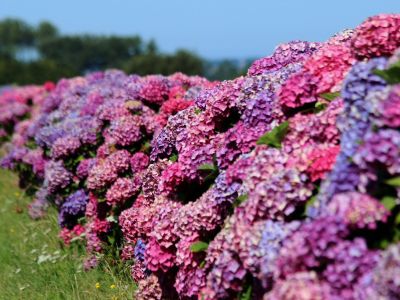Though hydrangea bushes within flower beds are most common, many flower lovers have chosen to explore the idea of making a hydrangea hedge. Learning more about this process can help growers decide whether making a hydrangea hedge row is right for their garden.
Hydrangea Hedge Ideas
Hydrangea hedges are popular with homeowners who wish to build privacy between neighbors while making a show-stopping visual impact. In full bloom, large hydrangea hedges are enough to make most passersby stop and look twice. Though many varieties do not grow to be exceptionally tall, they are able to establish themselves easily and quickly as a hedge. Plants can also range greatly in color and flower shape. Before planting hydrangea as hedges, consider your needs and those of the plants. Since large-scale plantings can be quite an investment in terms of both time and money, accounting for conditions like light, moisture level, and care will all be vital to the health and success of the hydrangea hedge row planting. Adequate research during the planning phase will be of great importance to this project.
How to Grow a Hydrangea Hedge
After selecting your hydrangeas, the rest is relatively simple. Spacing will be of primary focus when making a hydrangea hedge. Planting distance between each plant will vary depending on the size of each hydrangea at maturity. Ideally, growers should situate plants so that the established plants are able to intertwine and form one large row without gaps. Too much spacing between each hydrangea bush can cause the hedge to look sparse, empty, or even bare in spots. Hydrangea bushes grown as a hedge will still require frequent maintenance, just as those within smaller plantings. This will include consistent irrigation throughout the hottest portions of the day to prevent wilting, fertilization, and regular seasonal pruning. By following a few routine maintenance guidelines, those who use hydrangea as hedges are sure to enjoy a profusion of blooms throughout the entire growing season.
